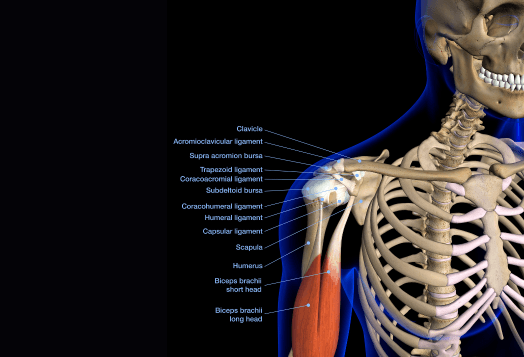You’ve spent hours at the gym, cranking out bicep exercises with nothing to show for it but sore arms and frustration. The problem is that you’re probably stuck in a bicep rut. It’s the classic case of working hard, but not smarter.
It’s time for a change. Let’s ditch the same old routine and shake things up with bicep exercises that actually get results. Grab those dumbbells and let’s get to work.

Why Should You Care About Bicep Workouts?
Building bigger, stronger biceps isn’t about looking good at the beach or in a sleeveless shirt. It’s more about achieving a level of arm strength that can power you through everyday tasks. It’s about functional arm strength, joint stability, and improving your overall upper body training. When done correctly, a bicep workout at the gym or at home can transform the strength and size of your arms.
Strong biceps are vital for daily tasks, including lifting, pulling, and carrying. Having upper limb strength also contributes to better muscle contraction control and aids in muscle fibre recruitment for overall strength development.
Basic Terms You Need to Know for Bicep Workouts
Before jumping into bicep exercises, let’s cover a few key terms to help you understand the science behind the moves:
Muscle Fibre Recruitment: This is how your body activates different muscle fibres during exercise. For bigger biceps, you'll want to engage both slow-twitch (endurance) and fast-twitch (strength) fibres. The more fibres you recruit, the bigger the gains.
Hypertrophy: Simply put, hypertrophy is muscle growth. It happens when you put your biceps under stress, causing small tears that repair and grow back stronger.
Elbow Flexion: This is the bending motion of your arm at the elbow joint. It's the primary movement during any bicep curl, activating the biceps brachii.
Peak Contraction: The peak contraction is when your muscle is fully contracted at the top of the movement. Squeeze your biceps at the top of a curl for maximum tension and growth.
Eccentric Training: The eccentric phase is the lowering part of the lift (like when you slowly lower the dumbbell during a curl). This creates more tension, helping with strength and size.
Strict Form: Using strict form means performing the exercise with controlled movement, isolating the biceps to get the best results without cheating.
The Nitty Gritty of Bicep Anatomy
You have the terms down, now it's important to understand the muscles you’re targeting with your bicep exercises:
Biceps Brachii: The classic "bicep" that you see flexed in the mirror or the prominent two-headed muscle on the front of your upper arm. This muscle is the most visible part of the arm and is responsible for elbow flexion (bending your arm).
Brachialis: Located underneath the biceps brachii, this muscle plays a crucial role in elbow flexion and can help make your biceps appear fuller when developed.
Brachioradialis: This muscle, located in the forearm, helps with elbow flexion as well and contributes to overall arm strength

What You Need for Bicep Workouts
To get the most out of your bicep workouts, you'll need a few basic tools:
Dumbbells: Great for exercises like dumbbell curls and hammer curls, helping isolate the biceps for muscle growth.
Barbells: Perfect for lifting heavier and increasing strength with exercises like barbell curls.
Cables: Cable machines provide constant tension, making them ideal for variations like cable curls that boost bicep hypertrophy.
Bodyweight Resistance: Chin-ups and push-ups are excellent bodyweight exercises that engage the biceps while building overall upper body strength.
Resistance Bands: Portable and versatile, resistance bands mimic cable exercises, providing constant tension for bicep exercises on the go.
Why Bicep Workouts Are a Game-Changer
Incorporating bicep workouts into your fitness plan gives you stronger, better-looking arms while improving your overall strength and confidence.
1. Build Strength for Everyday Tasks: Bicep exercises improve functional arm strength by targeting the biceps brachii, allowing you to perform daily tasks with ease, such as carrying groceries or opening jars, without breaking a sweat.
2. Sculpt Stronger Arms: By consistently hitting your biceps with dumbbell bicep workouts or barbell curls, you’ll see that coveted muscle mass building. Over time, your biceps will grow in both size and strength, giving you fuller arms that stand out.
3. Improve Upper Body Stability: Stronger biceps contribute to better elbow stability, much like chest stretches improve shoulder mobility. Having strong, stable arms means less strain on your joints and reduced risk of injury during upper body training.
4. Boost Performance in Sports: By regularly performing bicep exercises, you’ll enhance your athletic arm strength, making you more efficient in sports like rock climbing, rowing, or swimming.
6. Enhance Muscle Aesthetics: Want those arms to pop? Consistent bicep exercises with dumbbells or cables will carve out your arms, leading to that sculpted look that makes all the difference when you roll up your sleeves.
7. Feel More Confident: Nothing beats the satisfaction of watching your hard work pay off in the mirror. As your biceps grow stronger and more defined, you’ll feel a sense of confidence both in and out of the gym.

The Best Bicep Exercises for Bigger, Stronger Arms
Let’s break down the best bicep exercises you can do at the gym, with dumbbells, or even at home. These moves will help you target all aspects of the bicep, from overall strength to peak contraction and muscle definition.
Gym-Based Bicep Exercises
1. Barbell Curl – 3 sets of 10 reps
The ultimate classic for bicep workouts. Barbell curls recruit major muscle fibres to build overall arm mass. For more classic lifts to boost overall muscle growth, check out our guide on the best weight lifting exercises.
How to do it:
Stand upright with your feet shoulder-width apart.
Hold a barbell with an underhand grip (palms facing up), hands shoulder-width apart.
Keep your elbows tucked in at your sides and your chest lifted.
Curl the bar up towards your shoulders, squeezing your biceps at the top.
Lower the bar slowly and with control back to the starting position.
Tip: Don’t swing the bar or use your back; slow, strict form delivers the best results.
2. Preacher Curl (Machine or Free Weights) – 3 sets of 12 reps
This variation locks your arms in place, helping you isolate the biceps without momentum.
How to do it:
Sit on a preacher bench and rest your upper arms against the angled pad.
Grip the bar or dumbbells with an underhand grip.
Curl the weight upwards until your forearms are vertical.
Squeeze your biceps at the top, then lower the weight slowly.
Tip: Pause briefly at the bottom to prevent bouncing and maintain constant tension.
3. Cable Rope Hammer Curl – 3 sets of 15 reps
Targets the brachialis and forearms, giving your arms a thicker appearance.
How to do it:
Attach a rope handle to a low cable pulley.
Stand facing the machine and hold the rope with a neutral grip (palms facing inwards).
Keep your elbows tucked close to your body.
Curl the rope towards your shoulders, separating the ends slightly at the top.
Lower slowly under control.
Tip: Focus on a slow lowering phase; this is where most of the muscle-building magic happens.
Dumbbell-Focused Bicep Exercises
1. Standard Dumbbell Curls – 3 sets of 12 reps
A classic isolation move for each arm, perfect for balanced bicep development.
How to do it:
Stand tall with a dumbbell in each hand, palms facing forward.
Keep your elbows close to your torso.
Curl the dumbbells up towards your shoulders.
Squeeze at the top, then lower slowly and under control.
Tip: Avoid swinging your arms—your upper arms should remain still throughout the movement.
2. Hammer Curls – 3 sets of 10 reps
Hammer curls target the brachialis muscle, enhancing the width of your arms.
How to do it:
Hold a dumbbell in each hand with palms facing your body (neutral grip).
Curl the dumbbells upwards without rotating your wrists.
Pause at the top and lower slowly.
Tip: Squeeze the dumbbells tightly to activate more stabiliser muscles.
3. Zottman Curls – 3 sets of 12 reps
A brilliant compound move for full-arm development—biceps on the way up, forearms on the way down.
How to do it:
Start with palms facing up and curl the dumbbells as normal.
At the top, rotate your wrists so your palms face down.
Lower the dumbbells slowly in this position.
At the bottom, rotate palms back to the starting position and repeat.
Tip: Control every part of the movement to improve grip and forearm strength.
At-Home Bicep Workouts
1. Resistance Band Curls – 3 sets of 12–15 reps
Perfect for home or travel, this move gives great tension across the biceps.
How to do it:
Stand with your foot in the centre of a resistance band, one handle in each hand.
Keep your elbows by your sides and your palms facing forward.
Curl the handles upwards towards your shoulders.
Lower with control.
Tip: Shorten the band to increase resistance. Don’t let the tension drop at the bottom.
2. Bodyweight Isometric Curls (Towel Resistance) – 3 sets of 20 seconds
Use your own strength to simulate a curl; this is ideal when equipment is limited.
How to do it:
Loop a towel around a sturdy object or your foot if seated.
Hold both ends and mimic a curling motion while pulling upwards.
Resist with your opposite strength, creating static tension.
Hold for 20 seconds per rep.
Tip: Engage your biceps fully; this works best when you’re actively contracting the muscle.
3. Negative-Focused Curls (Slow Descents) – 3 sets of 6–8 reps
Great for strength and control, this eccentric-based move builds serious muscle with light weight.
How to do it:
Use light dumbbells or a band.
Curl up as usual, then lower very slowly for 4–5 seconds.
Repeat with focus on maintaining tension throughout the descent.
Tip: Don’t rest at the bottom—keep the reps flowing to maintain that burn.
Bicep Workouts for Different Goals
Not all bicep workouts are built the same, and neither are your goals. Whether you're chasing massive arms like Hrithik Roshan, sleek definition, brute strength, or endless endurance, your training approach needs to match.
For Mass Building: If bigger arms are your goal, focus on heavy barbell curls, incline dumbbell curls, and low-rep sets (6–8 reps). Stick to heavy, compound-focused lifts to maximise muscle fibre recruitment and hypertrophy.
Tip: Train close to failure for real growth.
For Muscle Definition: For sharper, more defined biceps, add higher-rep sets (12–15 reps) using exercises like cable curls and concentration curls. These moves keep constant tension, boosting muscle tone.
Tip: Focus on strict form and slower tempos for best results.
For Strength: Building strength requires heavier weights and a progressive overload approach. Prioritise barbell curls and strict preacher curls with rep ranges around 4–8
Tip: Track your lifts weekly to stay on top of your strength cycles.
For Endurance: To train for endurance, use lighter weights with higher reps (15–20), incorporating burnout sets and tempo curls (controlling the speed of each part of the lift). These techniques are great for building lasting stamina and arm resilience.
Tip: Limit rest between sets to 30–45 seconds to keep the burn going.
Mastering Bicep Exercises the Right Way
If you want your bicep workouts to deliver those sleeve-busting gains, there’s more to it than just grabbing a dumbbell and curling away. Follow these smart dos and don'ts to level up your bicep game:
The Must-Dos for Every Bicep Exercise
Choose the Right Weight: Select a weight that challenges you but still allows strict form. Heavy enough to struggle by the last two reps, light enough to control every movement.
Master Proper Form: No swinging, no cheating, only clean, controlled reps. Keep elbows stable, wrists strong, and let your biceps brachii and brachialis do the work.
Control the Tempo: Use slow, deliberate movements for both lifting (concentric) and lowering (eccentric). Better muscle fibre recruitment = better bicep hypertrophy.
Work the Full Range of Motion: Stretch fully at the bottom, squeeze fully at the top. Half reps cheat your progress and leave gains on the table.
Incorporate Variety: Switch grips, angles, and tools (barbells, cables, dumbbells, bodyweight) to target all parts of the upper limb strength network.
The Major Don’ts for Bicep Exercises
Using Too Much Weight: If you're jerking, swinging, or turning it into a full-body exercise, the weight’s too heavy.
Shortening the Range of Motion: Partial reps limit muscle contraction and leave smaller muscles underdeveloped. Go all the way.
Skipping the Negative Phase: Lower your weights slowly. Skipping eccentrics is like watching only half a movie—you miss the real drama (and the gains).
Overtraining Without Recovery: Training biceps every day leads to plateaus and injury. Stick to 2–3 focused sessions per week, and respect recovery protocols for real growth.
Neglecting Load Management: Don’t keep chasing heavier weights without perfect form. Gradually add weight, reps, or sets as part of a smart training progression.
Unlock Your Best Biceps Yet
You’ve now got everything you need to level up your arm day routine. From mastering the best bicep exercises at the gym to using dumbbells and resistance bands at home, you’re armed with the knowledge to build stronger, more defined biceps.
The key takeaway? Consistency is key. Keep your form tight and manage your weights smartly. The more you apply these principles, the more you’ll see results. You can take expert guidance as well.
Now, it’s time to put these tips into action, challenge yourself, and start seeing the payoff of your hard work. Your biceps are waiting to be sculpted. You’ve got this.




